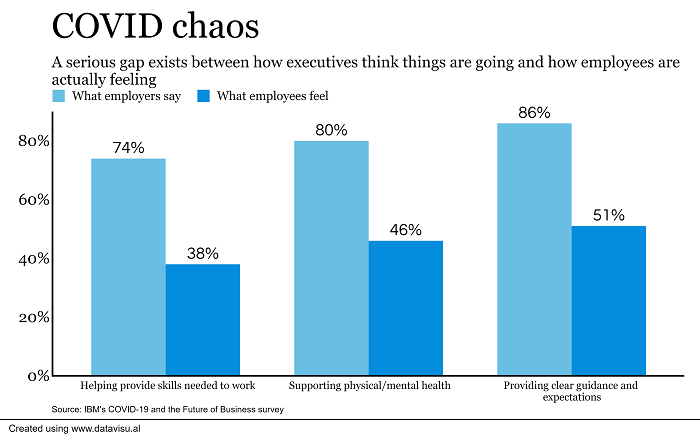As we transition back to “normal,” employees are going to need extra support to help them through the extremely disruptive experience of the last 18 months. So far, however, it appears there’s a gap in perceptions of how supportive employers have actually been.
These numbers show we have a lot of work to do, particularly because talent is hard to find and keep these days. Savvy employers will be mindful of employee needs as, “the ‘anywhere’ workforce can require leaders… to adopt more empathetic leadership models that prioritize employee well-being and to champion flexible and inclusive cultures” (Mark Foster, SVP, IBM Global Business Services).
As I shared in my most recent LinkedIn Learning course on flexible work, for example, employees are willing to take some serious pay cuts to work from home, and flexible work is a way to showcase your commitment to diversity and inclusion.
I hear you asking what are some other ways to show empathy, prioritize well-being, and create an inclusive company culture beyond offering flexible work. Luckily we wrote an ebook on the topic the first time we thought COVID was coming to end in 2020, and we dug it up to share some tips here. It’s perfectly relevant this second time around.
Tips for Reopening the Workplace
Here are five tips to show employees you care:
1. Remind people they belong by engaging in some post-COVID onboarding.
Employees will feel uneasy about their role in the organization post COVID-19, and a warm welcome can go a long way. Brainstorm ways to reconnect employees with the workplace and the organization itself. Get out your onboarding program and figure out how you can apply it to your returning workforce. Check out this article, fantastic resource number one, if you need some inspiration.
2. Set an example by sharing your own emotions.
Although everyone plays a role in establishing company culture, leadership has the power to set the tone. If you share your own emotions others may follow suit. Don’t be shy to talk about how it was to be remote, the challenges you faced, and your ups and downs. Employees will build camaraderie around this tough time they’ve gone through together, and will get to know each other better, which encourages collaboration.
3. Hold regular check-ins with employees.
Many leaders, managers and supervisors instituted regular check-ins with employees to ensure open communication while everyone worked remotely. Continue this practice in-person, as it’s effective to individually reach out to employees and makes it more likely for them to come forward about what they are going through. Use this list of questions, your second awesome resource, for inspiration about what to ask.
4. Help employees remain cognizant and aware of their own emotional states.
There are several emotional intelligence apps out there to assist individuals with their emotional wellbeing. The information isn’t for you to collect, but it’s important to encourage employees to stop and consider how they’re feeling from day to day. Invest in offering this or other types of apps such as meditation, journaling, or happiness, to show employees their mental health and wellbeing is important to you.
5. Use your core values to inspire ideas.
It’s important to take a look at your core values and identify how they may change as you reopen the workplace and develop a new normal. Mental health and wellbeing should be included in that conversation. Review your core values and let them inspire your mental health and wellness programs.
This is an excerpt from our Reopening the Workplace eBook.
Let’s create a plan to build a positive workplace! | Invite Catherine to speak | Check out our webinar library




